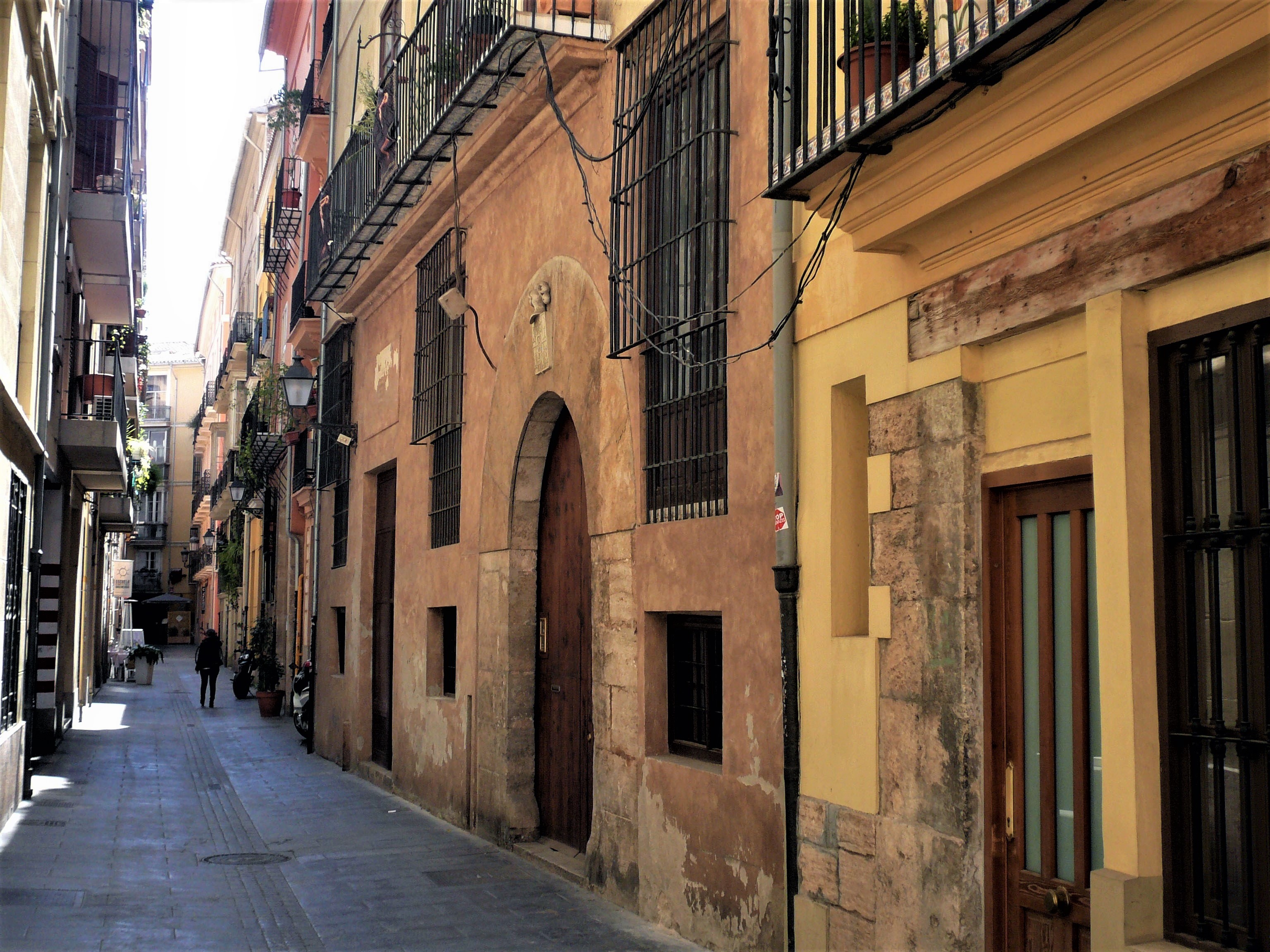The building on the right is the Lassala palace. Of Gothic origin, in the 18th century this palace was bought by the Lassala family from France.
Formerly there were many houses in this street where lawyers lived due to the proximity of the Royal Court, which was located in the Palace of the Generalitat.
This street is named after the clock that was in the Municipal Council, located where today is the garden of the Palace of the Generalitat, which can be seen at the end of the street. At the beginning of the 15th century the official clock was installed in the Miguelete tower.
In some excavations carried out in this street, the Roman mosaic of the Medusa, from the second century, was found. This mosaic is in the Museum of History of Valencia.
This street is so named because many nobles settled here in the past, hence several palaces are preserved in it. The reason for settling on this street was that at the beginning of it, approximately where the Plaza de San Jaime is located, there was a group of buildings owned by the king.
The building on the left is the Palace of the Marquis of Malferit, also called the Palace of the Counts of Brizuela. It is from the 15th century, although its current appearance is due to the reforms of the 18th and 19th centuries. It currently houses a curious museum of tin soldiers (L'Iber Museum).
In front of the palace is the Talía theater, from the beginning of the 20th century.
The building on the right is the palace of the Marquis de Mercader, from the late 14th century. The current appearance of the facade is a consequence of the reform of the 18th century. In the 20th century, it was for a time an educational center and currently houses the Union of Agricultural Cooperatives of Valencia.
It is the only palace on Caballeros street that has a garden, located at the end of the courtyard.
In the background, to the left and next to the Palace of the Marquises of Mercader, is the Palace of the Conde de Alpuente, from the 18th century in its current configuration. This palace was also the headquarters of the Royal Economic Society of Friends of the Country and for a time belonged to the painter Manuel Valdés (member of Equipo Crónica). It is now the headquarters of an engineering company.
133 LA SEO NEIGHBORHOOD. Santa Catalina Square. Santa Catalina Tower (17th-18th centuries)
- La Seo Neighborhood
- Hits: 647
This tower is a work from the late seventeenth century and was started by Valero Viñes but, when he died soon, his brother Juan Bautista Viñes, who is the true author of the work, took over. The tower was completed in the early 18th century.
The tower had a clock from 1917, which was removed in the restoration of the early 21st century.
This church has its origin in the 13th century and received the name of Santa Catalina in honor of the Infanta Catalina, daughter of Jaime I. In the 16th century it was covered with Renaissance decorative elements and will still have another reform in the 18th century, in the that the old bell tower was demolished.
On the left, painted in a reddish tone, is the narrowest facade in Spain with its 107 cm.
The blinded arches that are seen to the right belonged to the Lonja del Mustasaf or Almotacén, of Arab origin destined to control the weights and measures of the market. This institution had its headquarters here from 1372 to 1594.
The square has been called Lope de Vega since 1917. Before it was called Plaza de las Hierbas, because of the vegetables that were sold here.
During the 13th century the medieval cemetery of the Church of Santa Catalina was located here, but in the 14th century it was converted into a market place.
In this square is one of the entrances to the Plaza Redonda.
















